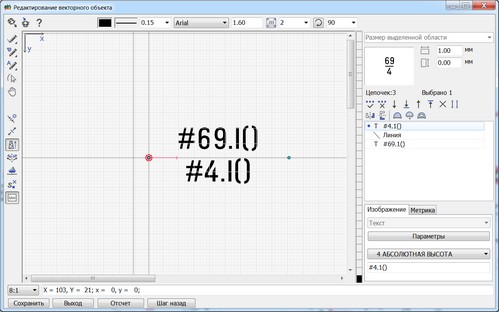Complex titles |




|
|
Complex titles may consist of two or more compound titles, the points of which are located at the same level as the point of the sign binding. Complex titles can be of the following forms:
These types of titles contain the following notation: from T1 to T6 - text values, @ - a conventional sign, dividing line (for texts T1 and T2). Basic requirements for creating the templates of complex title: - points of all elements of the complex title should be located at the same level as the point of binding the vector sign; - point of binding the vector sign should coincide with a conventional sign point, in the absence of a conventional sign - with the first point of title T1, or between the first and second points of title T1; - points of titles T1, T2 and a dividing line (in the first form) should coincide; - points of titles T1, T5 and T6 (in the second form) should coincide; - all titles must be aligned in the order indicated in the table.
When displaying complex titles, the position of the elements of the vector sign is corrected in the absence of semantics of the elements T1, T2, T5, T6. Correction of the position of the elements depends on the main element, which is the first element of the vector sign. In the figure, the main element is T2 (absolute height).
Rules for automatic correcting the form of complex title: - at the forest titles, the main element is the numerator (T1 - relative height). In the absence of a denominator (T2 - tree thickness) the line is deleted, the main element T1 is aligned along the midline; - for the title of the bridge, the main element is the numerator (T1 - length-width). In the absence of a denominator (T2 - load capacity), the line is removed, the main element T1 is aligned along the centerline. A hyphen is added between the left (T3 - material,height) and main (T1) elements; - at the title of benchmark the main element is the denominator (T2 - absolute height). In the absence of numerator (T1 is the absolute height of the center), the line is deleted, the main element T2 is aligned along the midline; - for the title of the dam, the main element is a line that is deleted only in the absence of the numerator (T1 - width) and the denominator (T2 - relative height); - if the main element is any element (for example T3), except the numerator (T1), denominator (T2) and the line, then in the absence of T1 or T2, T1, T2 and the line are deleted; - in all cases, in the absence of a line, the right element (T4) is deleted; - in the absence of element T5, element T6 is aligned on the center; - in the absence of element T6, element T5 is aligned on the center; - in the absence of elements T5 and T6, element T1 is aligned on the midline.
The first form of the complex title The second form of the complex title
|


